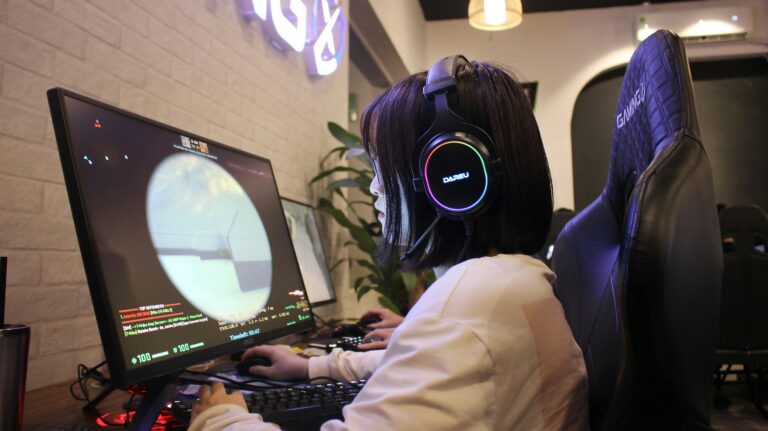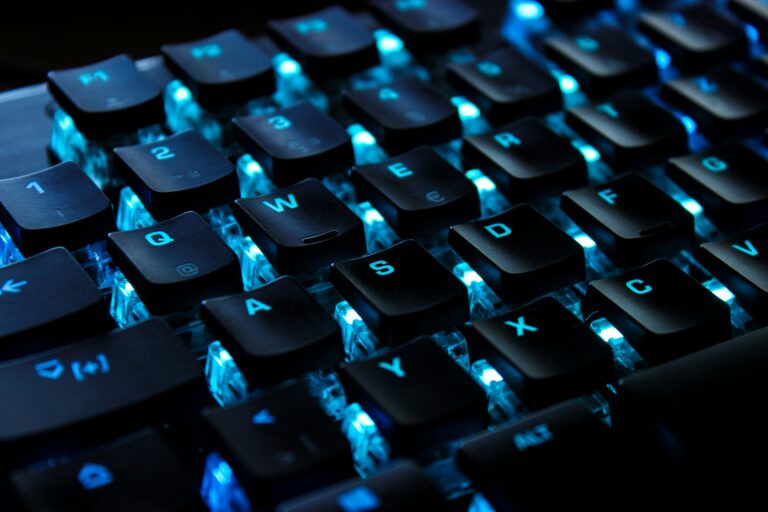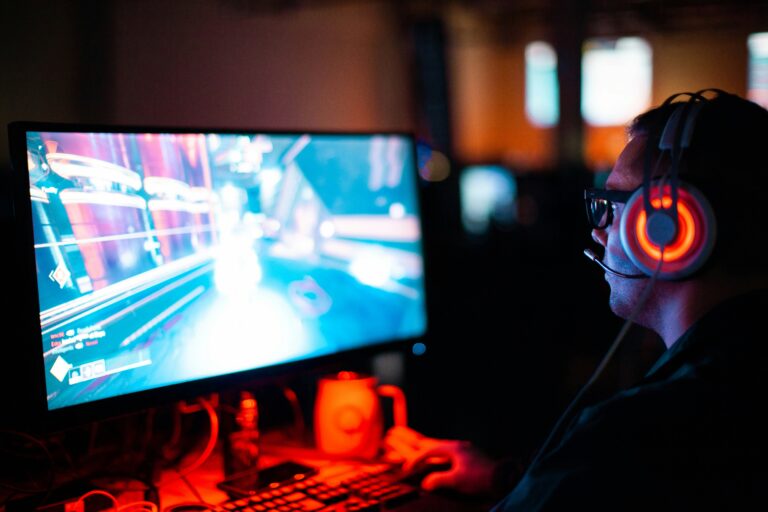A good gaming mouse is more than just an accessory; it’s a performance enhancer. In online games, where every millisecond counts, the mouse you use can significantly influence your aim, reaction time, and overall gameplay. Many beginners, however, overlook this factor and use standard office mice, which are not optimized for competitive play.
The truth is, gaming mice are engineered with features that can take your performance to another level. From high-precision sensors to lightweight designs and programmable buttons, each characteristic plays a role in helping you react faster and control your movements with greater accuracy.
If you want to climb the ranks and enjoy a smoother gaming experience, choosing the right mouse is essential. In this guide, we’ll break down everything you need to know—from types and sensors to weight and customization—so you can make the best choice for your playstyle. Keep reading to discover how to pick the perfect gaming mouse for your needs!
Understand the Different Types of Gaming Mice
Gaming mice are designed for specific genres and playstyles. Before buying, think about the games you play most.
- FPS Mice: Optimized for first-person shooters like Valorant or CS:GO. They’re lightweight, precise, and have a simple design for fast aiming.
- MMO Mice: Perfect for games like World of Warcraft or Final Fantasy XIV. They feature multiple programmable buttons for abilities and macros.
- MOBA/RTS Mice: Balanced designs with extra buttons for strategy games like League of Legends or StarCraft II.
- All-Purpose Gaming Mice: Versatile models suitable for multiple genres without specializing in one.
Examples of top picks by category:
- FPS: Logitech G Pro X Superlight, Zowie EC2.
- MMO: Razer Naga X, Corsair Scimitar RGB Elite.
- MOBA: Logitech G502 Hero, SteelSeries Rival 5.
- General: Razer DeathAdder V2, HyperX Pulsefire FPS Pro.
Consider Your Grip Style
Your grip style affects how you interact with the mouse, impacting both comfort and control. There are three main grips:
- Palm Grip: The entire hand rests on the mouse. Best with larger, ergonomic designs like Razer DeathAdder.
- Claw Grip: Fingers arch, and only part of the palm touches. Good with medium-sized, lightweight models.
- Fingertip Grip: Only fingertips touch the mouse. Ideal with small, ultra-light mice like Glorious Model O-.
If possible, test different sizes to see which feels most natural during long sessions.
Check the DPI and Sensitivity Options
DPI (dots per inch) determines how sensitive the mouse is. Gaming mice allow you to adjust DPI, often with dedicated buttons.
- Low DPI (400–800): Preferred by pro FPS players for accuracy.
- Medium DPI (800–1600): A balanced choice for most games.
- High DPI (2000–6000+): Useful for ultra-wide monitors or very fast movement.
Most modern gaming mice support DPI ranges up to 16,000 or even 25,000. While impressive, extreme DPI settings are rarely practical for gaming—precision matters more than raw speed.
Look at the Sensor Quality
The sensor is the heart of a gaming mouse. The two main types are:
- Optical Sensors: Track movements with light. They’re accurate, consistent, and preferred by competitive players.
- Laser Sensors: Work on more surfaces but can introduce acceleration issues, reducing consistency.
For serious gaming, choose a mouse with a high-quality optical sensor like the PixArt PMW3360, Hero 25K, or Focus+.
Check for Weight Customization
Mouse weight influences speed and control:
- Lightweight (<80g): Favored for FPS games due to quick movement and reduced fatigue.
- Medium (80–100g): A balanced choice for most gamers.
- Heavy (>100g): Offers stability, preferred by some strategy players.
Some mice, like the Logitech G502 Hero, include removable weights so you can fine-tune the feel.
Evaluate the Buttons and Customization Options
The number and placement of buttons matter, especially for certain genres:
- FPS: Minimal buttons to avoid accidental clicks.
- MMO: 6–12 side buttons for quick ability access.
- MOBA: A few extra buttons for efficient skill use.
Also, consider software support. Brands like Razer Synapse, Logitech G Hub, and Corsair iCUE let you remap buttons, set macros, and save profiles.
Consider Wired vs. Wireless Gaming Mice
Wireless technology has evolved, eliminating most latency concerns. However, your choice depends on preference:
- Wired: Zero battery worries, lower cost, and guaranteed stable connection.
- Wireless: Cleaner desk setup, portable, but requires charging.
For wireless, look for low-latency options like Logitech Lightspeed, Razer Hyperspeed, or SteelSeries Quantum 2.0.
Check the Build Quality and Comfort
A mouse that feels good in your hand is crucial for long gaming sessions. Look for:
- Ergonomic designs to reduce strain.
- Durable materials like reinforced plastic and rubber grips.
- High-quality switches (Omron or Kailh) rated for millions of clicks.
Some models also offer textured grips and customizable shells for enhanced comfort.
Set a Budget and Compare Models
Budget plays a huge role. Luckily, great gaming mice exist at every price point.
- Budget ($30–$50): Solid sensors, basic features.
- Mid-range ($60–$100): High-quality sensors, better build, customizable lighting.
- High-end ($120+): Ultra-light builds, wireless tech, advanced customization.
Best picks by budget:
- Budget: Logitech G203 Lightsync, Cooler Master MM710.
- Mid-range: Razer DeathAdder V2, SteelSeries Aerox 5.
- High-end: Logitech G Pro X Superlight, Razer Viper Ultimate.
Test Before You Buy (If Possible)
Specs on paper are useful, but nothing replaces hands-on testing. Try to test different mice in stores or at friends’ setups.
What to evaluate during testing:
- Comfort in your preferred grip.
- Ease of accessing buttons.
- Smoothness of movement and click feel.
Match the Mouse to Your Playstyle
The perfect mouse depends on the games you love:
- FPS (Valorant, Apex, CS:GO): Lightweight, low-latency, with precise optical sensors.
- MMO (WoW, ESO): Ergonomic, multiple buttons, onboard profiles.
- MOBA (Dota 2, LoL): Comfortable, with 2–4 side buttons.
- Casual gaming: Prioritize comfort and durability over high-end specs.
Advanced Tips for Getting the Most Out of Your Gaming Mouse
- Adjust in-game sensitivity to work with your mouse DPI.
- Use a good mousepad for consistent tracking.
- Keep firmware updated to improve performance.
- Customize profiles for different games to optimize settings.
- Practice aim and control using training maps or aim trainers.
Conclusion
Choosing the right gaming mouse is a crucial step for anyone serious about improving their online gaming performance. The right model enhances precision, speed, and comfort, allowing you to focus on the game instead of fighting your equipment.
Consider factors like grip style, weight, sensor quality, and button layout. Set a budget, compare models, and test when possible. Whether you choose a budget-friendly wired model or a premium wireless option, the right mouse will elevate your gameplay. Pick wisely, and you’ll feel the difference with every click.
Frequently Asked Questions
1. What’s the most important feature in a gaming mouse?
The sensor and ergonomics are crucial—they directly affect accuracy and comfort.
2. Are wireless gaming mice good for competitive play?
Yes! Modern wireless tech is as fast as wired. Just ensure low latency and good battery life.
3. Should I choose a light or heavy mouse?
For FPS, lighter mice are better for fast aiming. For strategy games, heavier mice can feel more stable.
4. Do I need software to use all the features?
Yes, software allows full customization, from DPI settings to button remapping and RGB lighting.
5. How much should I invest in my first gaming mouse?
A $50–$100 mouse offers the best balance of performance, durability, and features for beginners.



